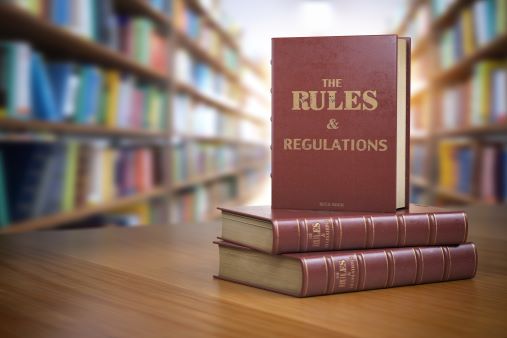Highlights
Under new Department of Justice ADA guidance, covered entities must provide persons with disabilities access to goods, services, programs and activities offered online
Entities “can choose” and “have flexibility” in how they provide access
The guidance does not clarify or otherwise address several key issues entities face in providing access to online offerings
On March 18, 2022, the U.S. Department of Justice (DOJ) issued a new guidance on website accessibility under Titles II and III of the Americans with Disabilities Act (ADA). The guidance addresses how state and local governments and “public accommodations” or businesses open to the public can ensure their websites are accessible to persons with disabilities, and emphasizes that web accessibility is an enforcement priority for the DOJ.
The DOJ last issued a guidance on this topic in June 2003, which addressed only state and local government websites under Title II of the ADA and the Rehabilitation Act of 1973.
Advocates for individuals with disabilities, as well as entities covered under the ADA, have long beseeched the DOJ to provide greater clarity with respect to an entity’s obligation under the ADA regarding accessibility of websites and mobile applications. In February, 181 advocacy organizations representing persons with disabilities sent a joint letter to the DOJ asking it to resume its rulemaking efforts on website accessibility and prioritize finalizing a rule by the end of the current administration. The DOJ’s prior efforts were withdrawn on Dec. 26, 2017, without even a proposed regulation being issued.
The new guidance reiterates the DOJ’s position that the ADA’s requirement to provide effective communication for persons with disabilities applies to the goods, services, programs or activities offered by state and local governments and businesses on the web. The DOJ also emphasizes, however, that covered entities “can currently choose how they will ensure that the programs, services, and goods they provide online are accessible to people with disabilities.” Even though covered entities have flexibility in how they comply with the ADA’s general requirements of nondiscrimination and effective communication, they still must ensure that the programs, services, and goods they provide to the public online are accessible to persons with disabilities. This is consistent with the DOJ’s prior statement (set forth in its Sept. 25, 2018, response to a joint letter from more than 100 members of Congress) that covered entities have flexibility and that “noncompliance with a voluntary technical standard for website accessibility does not necessarily indicate noncompliance with the ADA.”
The guidance does not clarify, however, what such flexibility or choice encompasses. Notably, the DOJ has previously taken the position that access can be provided via an alternate method (such as a toll-free phone number), but had sought public comment in previous rulemaking efforts regarding whether and/or in what circumstances such alternate access should be permitted.
The guidance provides examples of website accessibility barriers:
- Poor color contrast
- Use of color alone to convey information
- Lack of text alternatives on images
- Lack of captions on videos
- Inaccessible online forms
- Lack of keyboard navigation
The guidance identifies resources for further technical direction, and references both the Web Content Accessibility Guidelines (WCAG), which are voluntary and issued by the World Wide Web Consortium’s (W3C) Web Accessibility Initiative, and the Section 508 Standards, which set forth accessibility requirements for federal government websites. The Section 508 Standards adopt WCAG 2.0 Level AA Success Criteria. WCAG itself is an evolving set of guidelines. Since the Section 508 Standards were promulgated, WCAG 2.1 has been issued, and WCAG 2.2 and WCAG 3 are in process. Although the guidance does not expressly endorse a particular version of WCAG, the DOJ’s recent settlements regarding the accessibility of COVID-19 vaccine registration websites reference WCAG 2.1 Level AA.
While the continued acknowledgment that covered entities have flexibility in complying with their obligations under the ADA is welcome, the guidance itself does little to clarify issues that have rendered entities vulnerable to serial lawsuits. Such issues include:
- Which guidelines and standards should be used in assessing compliance? If a covered entity has conformed its website to WCAG 2.0 AA, must it further conform its website to WCAG 2.1 AA? WCAG 2.1 does not change any of the success criteria included in WCAG 2.0, but adds additional success criteria addressing elements or features not addressed in WCAG 2.0. Many court complaints and demand letters now reference WCAG 2.1 AA instead of WCAG 2.0 AA.
- How will “compliance” be defined? The DOJ has previously acknowledged that requiring 100 percent compliance 100 percent of the time is not a practical definition of compliance in the digital realm. Even entities that have invested significant resources in the accessibility of their websites, however, continue to be targeted with claims, even if the alleged barriers reflect isolated or de minimis issues.
- What is the threshold for “undue burden” in the digital accessibility context? Many lawsuits by serial files have targeted a wide range of entities, including smaller entities with limited resources. A plan for achieving and maintaining an accessible website can involve significant expenditures. For example, the cost of ongoing, periodic assessments and validation testing will vary depending on the nature of website, the scope of the testing, the frequency of the testing, and how many different assistive technologies and browsers are used in the testing. An ongoing testing program is frequently among the relief sought in complaints, yet the guidance does not address either the threshold for undue burden or the reasonableness of an ongoing testing and maintenance program.
- What is an entity’s obligation with respect to third-party content? An entity’s website can include links to third-party websites, as well as content or features such as plug-ins, that an entity has no ability to modify or require that the third party make accessible. An entity can face a hard choice between potential liability under the ADA or alternatively omitting features or content its users expect.
- Is an alternate method of access acceptable in lieu of making a website itself accessible? If so, what are the circumstances in which such an alternate method of access will be permitted and what forms can it take?
In summary, the guidance essentially does not provide any new information regarding the DOJ’s overall position and does not clarify the DOJ’s views on the many issues that can factor into an entity’s ability to successfully navigate accessibility compliance in the digital realm.
For more information, please contact the Barnes & Thornburg attorney with whom you work, or Teresa L. Jakubowski at 202-371-6366 or teresa.jakubowski@btlaw.com, or Kenneth J. Yerkes at 317-231-7513 or kenneth.yerkes@btlaw.com.
© 2022 Barnes & Thornburg LLP. All Rights Reserved. This page, and all information on it, is proprietary and the property of Barnes & Thornburg LLP. It may not be reproduced, in any form, without the express written consent of Barnes & Thornburg LLP.
This Barnes & Thornburg LLP publication should not be construed as legal advice or legal opinion on any specific facts or circumstances. The contents are intended for general informational purposes only, and you are urged to consult your own lawyer on any specific legal questions you may have concerning your situation.















